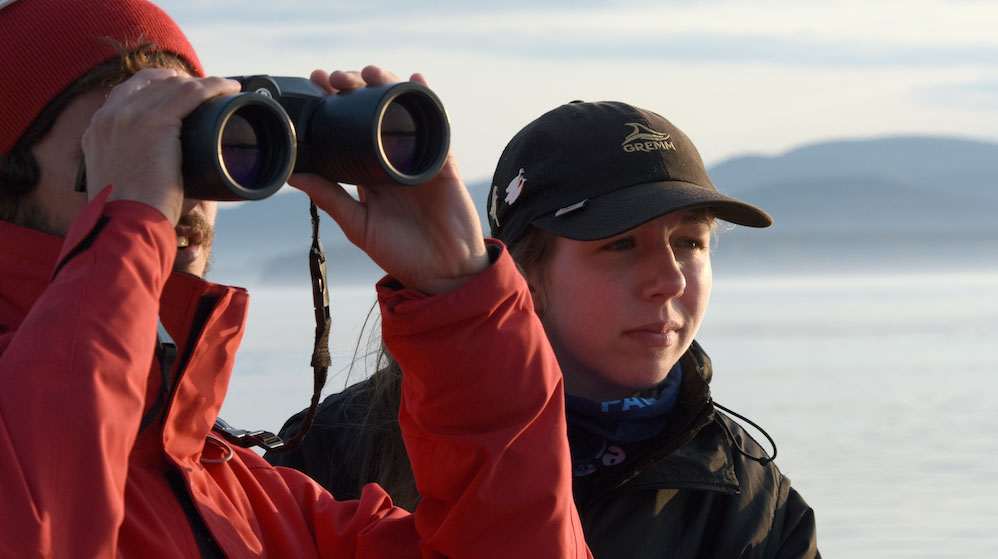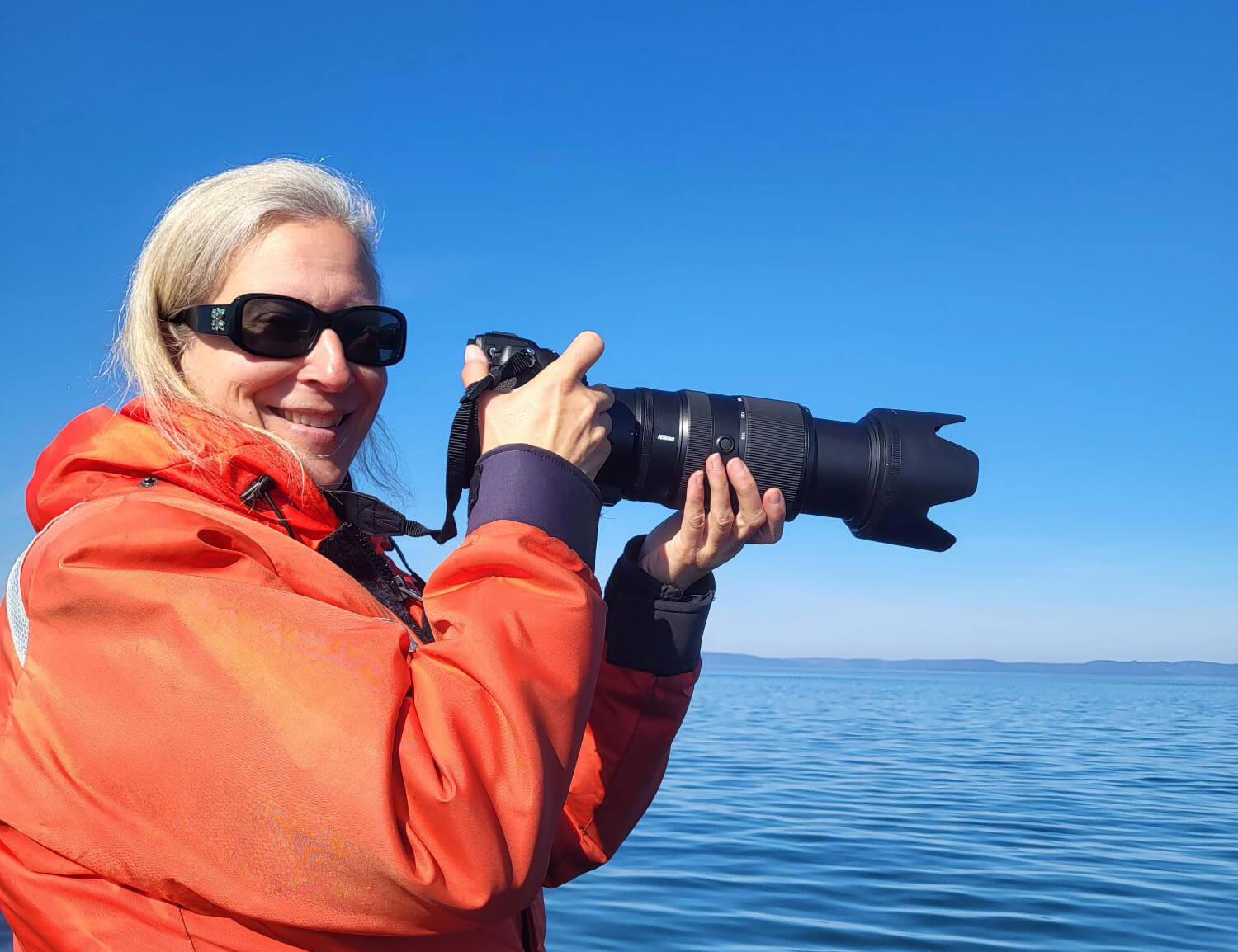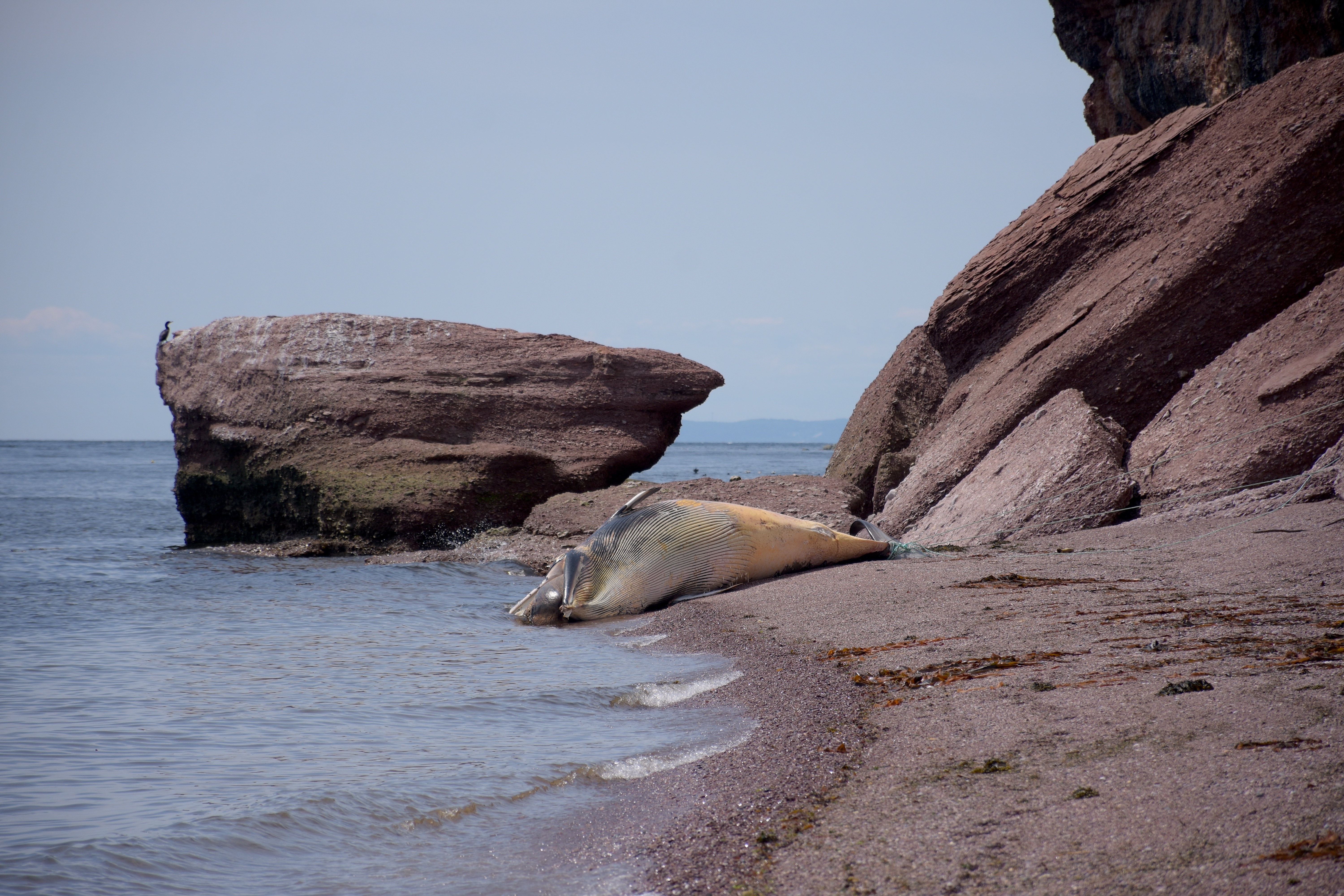Not this week at least! On several cruises, observers old and young smiled as they discovered harbour porpoises, those small, fast and dynamic whales. Measuring between 1.5 and 2 m, they are the smallest cetaceans in the St. Lawrence.
On August 26, a glassy sea allowed us to see them parading along the water surface. Gregarious, they travelled in small groups, though they can sometimes be seen in pairs or alone. Their brownish-gray backs are topped with a triangular dorsal fin; their bellies are slightly paler in colour. They surfaced to take a few quick breaths before diving again for less than five minutes (though they are capable of remaining underwater for up to about ten minutes). When they surface to breathe, their spouts are loud enough that they can be heard if the weather is calm. Also of note, the etymology of the name “porpoise” means sea hog!
Being patient and alert is the key to success for observing whales and enjoying every moment in their presence, whether they are harbour porpoises or large rorquals.
Marie-Pier Poulin joined the GREMM team this year. As part of the photo-census program of large rorquals in the Marine Park, she collects photos and data on board tour boats. She also shares this information with the editorial team of Whales Online.





